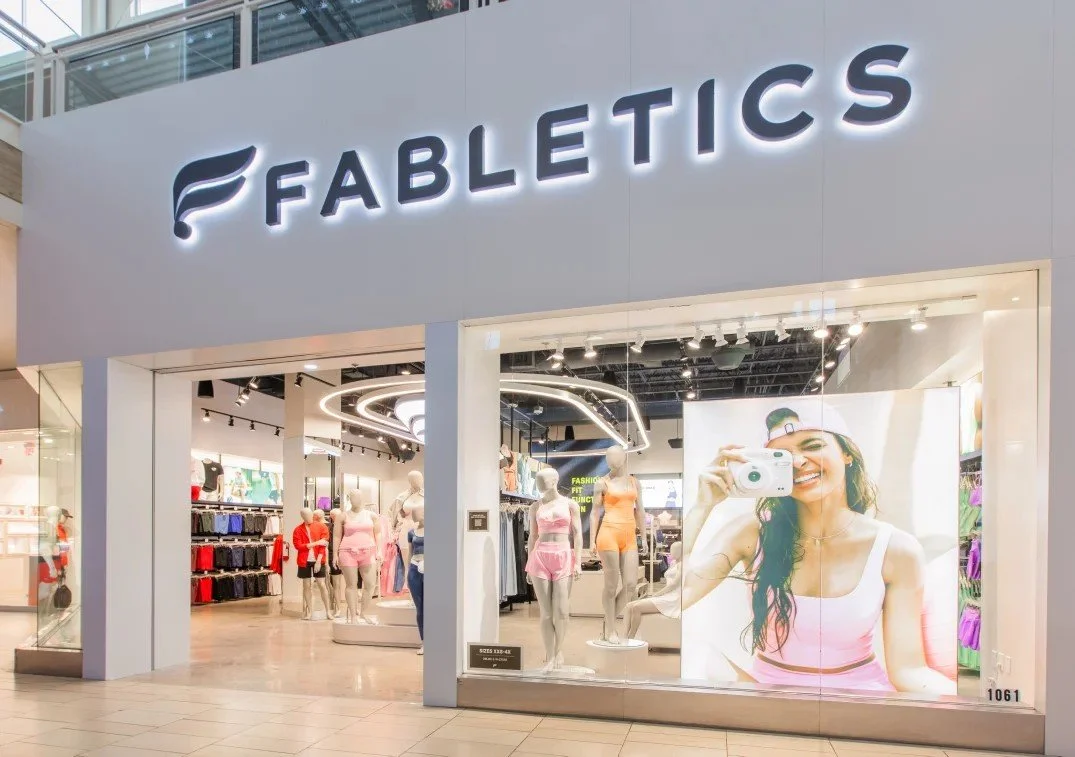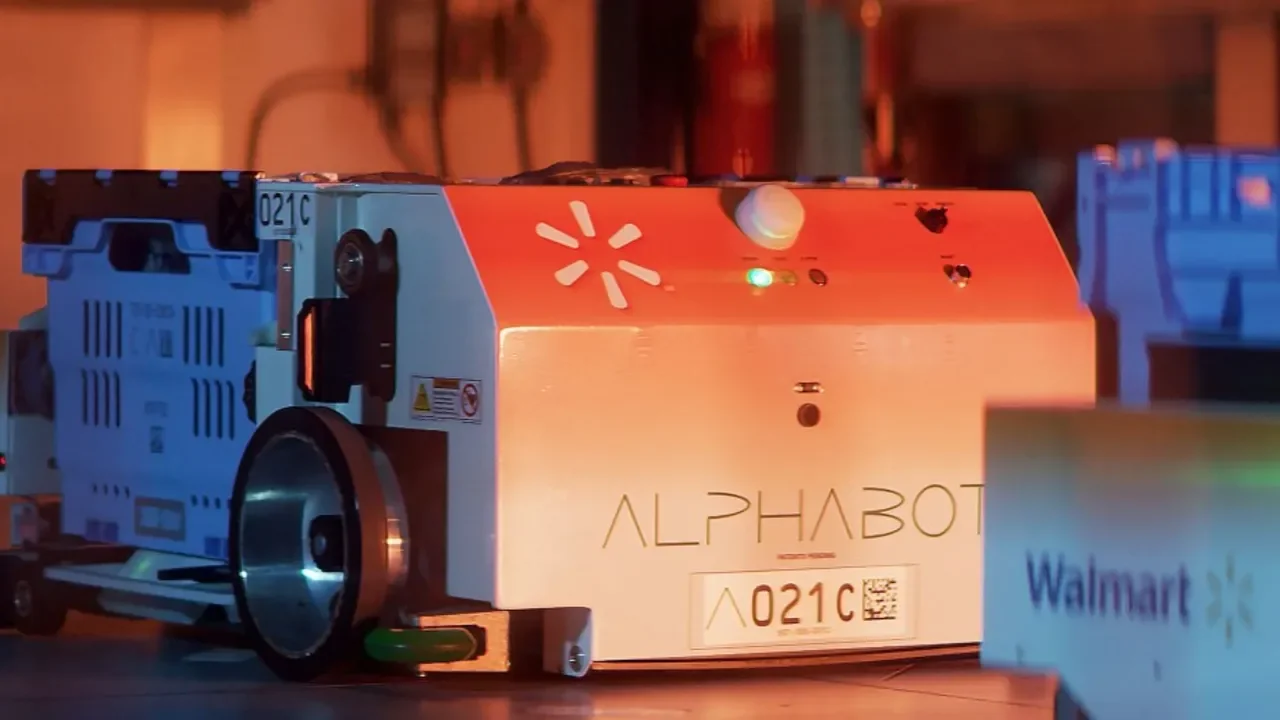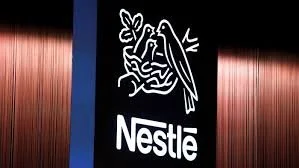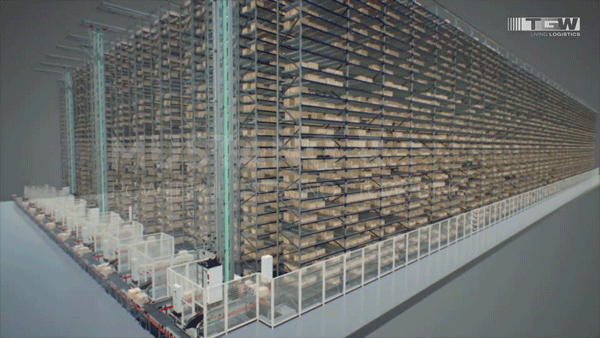The Rise and Fall of Attabotics: Updated
Attabotics filed for insolvency after Export Development Canada sought to enforce security over assets
Calgary robotics startup Attabotics Inc. filed under Canada’s bankruptcy act last week after its largest secured creditor, Export Development Canada, sought to enforce its security over the company’s assets, according to documents filed with an Alberta court.
The insolvent company, now down to nine non-executive employees after laying off 192 of its 203-person staff and suspending most of its operations on June 30, is now soliciting options to sell its assets or business over the next month after it failed to raise financing that would have enabled it to fund a spate of new business.
Attabotics last Wednesday filed an intention to make a proposal under the Federal Bankruptcy and Insolvency Act, and two days later received approval from Justice John Gill of the Court of King’s Bench of Alberta to obtain $1.5-million in interim funding from EDC, its largest secured creditor. The company had previously raised $220-million in financing from backers including EDC, Ontario Teachers’ Pension Plan Board, Coatue Management and Comcast Ventures plus $34-million from the federal Strategic Innovation Fund.
Attabotics, incorporated in 2016 and founded by CEO Scott Gravelle, made automation equipment used to fulfill orders that transforms product warehouses into high-density, vertical and scalable storage structures inspired by ant-colony frameworks. Instead of moving goods from aisle to aisle, Attabotics robots move up and down vertical structures, grabbing goods with extendable arms, then bringing them back to workers who prepare them for packing and shipping.
Attabotics chair Edna Conway said in a sworn affidavit that after spending tens of millions of dollars annually on research and development, the company in late 2022 attempted to accelerate deployment of its robotics warehousing system to new industries, customers and markets around the world. E-commerce had surged as consumer spending shifted online during the pandemic.
The company worked at several sites across North America with customers such as Canadian Tire, Gordon Food Services, Pan Pacific Pet and Modern Beauty Supplies.
While revenue reached $11.4-million in 2022, “revenues began to sharply decline” as interest rates shot up, constraining consumer spending and lowering demand for e-commerce, Ms. Conway wrote. That led some customers to delay planned projects with Attabotics, and revenues plummeted to $8-million in 2023 and $3-million in 2024.
Last year the company amassed $44.4-million in operating expenses and lost $49.3-million. In the first quarter of 2025 Attabotics generated just $800,000 in revenue and had $11.2-million of operating expenses, losing $12.5-million and ending the quarter with $6.3-million of cash and equivalents, down from $13.6-million a year earlier.
Ms. Conway wrote the business did begin to stabilize by late 2024, resulting in $30-million of new business to be delivered in 2025 and 2026. That included a supply agreement signed with British grocery conglomerate Tesco.
But when Attabotics tried to raise new capital to finance the orders, investors “expressed concern with the applicants’ cash flow challenges and elected not to participate in further financings,” she wrote, which caused a ripple effect across the investor community. That prompted the company to shelve financing efforts, which meant it couldn’t proceed on delivering on the orders “on the planned schedule,” she wrote.
By the time EDC served Attabotics with a notice of intention to enforce security on June 18 – triggering a 10-day waiting period before the agency could proceed – the company was already in discussions with various parties regarding the sale of its business or assets – including 150 granted and pending patents. The new money from EDC “is only sufficient to fund the applicants’ business for a period of 30 days on a massively scaled down basis,” Ms. Conway wrote.
In an e-mailed statement, EDC spokesman Louis-Antoine Paquin said the federally owned export finance business “has been a significant supporter to Attabotics. Over the past three years, EDC has provided both investments and financing to the company to support their Canadian manufacturing technology and supply chain ambitions. EDC’s support for Attabotics has been crucial for the company, enabling it to mature their technology while staying Canadian. EDC is providing financing support to Attabotics in support of its court approved restructuring process.”
The company’s three largest secured creditors are all federal Crown corporations or agencies: EDC is owed $46.3-million, followed by Business Development Bank of Canada, owed $2.8-million, and Western Economic Diversification Canada, which is out $2.5-million. The company has 131 secured creditors in addition to past and present employees.
Editor’s note: An earlier version of this story stated that Export Development Canada pushed Attabotics toward insolvency. In fact, EDC served the company with a notice of intention to enforce security on June 18, an action under the Bankruptcy and Insolvency Act by which a secured creditor informs an insolvent entity that it intends to enforce its security over the entity's property, thus preserving its rights. That triggers a 10 day waiting period before the creditor can take any action. The story has been udpated.
Source: https://www.theglobeandmail.com/business/article-export-development-canada-463-million-attabotics-creditor-protection/ (July 7, 2025)
Our Thoughts:
While revenue reached $11.4 million in 2022, Attabotics' sales sharply declined in the following years—dropping to $8 million in 2023, $3 million in 2024, and just $800,000 in Q1 2025. Operating expenses remained extremely high, with $44.4 million spent in 2023, leading to a $49.3 million annual loss, and $12.5 million lost in Q1 2025 alone.
These numbers suggest Attabotics likely invoiced two ASRS systems in 2022, one or two in 2023, one (likely very small) in 2024, and none booked so far in 2025. For a company that raised over $250 million, this level of commercial output was alarmingly low.
Yet just earlier this week, CEO Scott Gravelle made claims that Attabotics:
*Had $60 million in pipeline sales from Tesco, Gordon Food Service, Modern Beauty Supplies, the U.S. Department of Defense, and The RealReal
*Had recognized $37 million in revenue in 2025.
*Was on track to generate $100 million in 2026.
These statements are completely inconsistent with court filings and actual performance. They appear to be fabricated figures, misleading stakeholders with projections pulled out of thin air—like a magician producing coins from behind an ear.
Unfortunately, this type of behavior is common in the automation and robotics space. Many vendors routinely exaggerate their current sales, customer base, projected pipeline, and system capabilities, just as many are now overhyping vague claims of being "AI-enabled."
It’s worth pointing out that Attabotics repeatedly claimed to be the only 3D ASRS system in the world, describing their platform as “the first and only 3D robotics supply chain system.” These statements were grossly misleading.
For example, Exotec, a well-established ASRS provider, also operates a 3D ASRS system—its Skypod robots move vertically and horizontally within a racking system, offering true three-dimensional storage and retrieval capabilities. Exotec’s system was commercially deployed years before Attabotics reached full-scale production.
Claims of being the "only" 3D solution not only ignored existing competition but also distorted the landscape of ASRS innovation, where multiple vendors were already delivering multi-dimensional automation solutions at scale.
It’s unfortunate that major organizations like Tesco, Gordon Food Services, Modern Beauty Supplies, the U.S. Department of Defense, and The RealReal likely made high-risk purchasing decisions without conducting deeper technical and commercial due diligence. Each of these companies would have gained significant value by engaging an experienced and truly independent consultant—someone capable of separating bold marketing from operational reality.
Now, there’s a very real risk that the Attabotics systems already deployed will become ‘boat anchors’—expensive, unsupported hardware with no upgrade path—and will ultimately be decommissioned, leaving behind sunk costs and stranded operations.
hashtag
Stuck on a Critical Automation Project? Bring in the Experts — Instantly.
Whether you’re blocked on a brownfield retrofit, launching a greenfield site, or navigating a complex digital transformation, our expert advisors are ready to step in and help.
Work directly with senior consultants—former executives and technical leaders from Amazon, Walmart, and other Tier 1 supply chain operations. Book them by the hour or by the day. No long-term contracts. Just clarity and results.
Overview: Attabotics Files for Bankruptcy Protection
Attabotics Inc., a Calgary-based robotics and automation startup known for its innovative 3D vertical storage and retrieval system, filed for bankruptcy protection on June 30, 2025, according to multiple reports.
Founded in 2016 by CEO Scott Gravelle, Attabotics aimed to disrupt traditional warehouse fulfillment by eliminating aisles in favor of a cube-based, goods-to-person architecture inspired by the structure of ant colonies. The company's robotic "blades" operated on X, Y, and Z axes, fetching inventory bins stacked vertically inside a dense, modular cube.
At its peak, Attabotics employed over 300 people, with roughly 250 based in Calgary as of 2022. It was one of Canada’s most high-profile deep-tech ventures, widely promoted as a potential global leader in supply chain innovation.
However, the recent filing of a Notice of Intention to Make a Proposal under Canada's Bankruptcy and Insolvency Act reveals a sharp reversal of fortune. A sign posted at the company's facility near Calgary International Airport indicated that employee contracts were terminated effective June 30, and staff access to the premises was revoked. Some employees were seen leaving with personal belongings, exchanging quiet farewells.
Former staff began updating LinkedIn profiles with “Open to Work” statuses, and Gravelle’s personal bio was changed to read: “Recovering visionary. Taking a long-deserved break.”
Attabotics had raised over US$165 million between 2019 and 2022, including a US$71.7 million Series C-1 round, and received millions in public support from the Strategic Innovation Fund and the Opportunity Calgary Investment Fund.
Despite early promise, the company faced persistent technical and commercial headwinds that it ultimately could not overcome.
What Went Wrong
As seasoned professionals in the warehouse automation and robotics industry, our team has closely followed Attabotics' journey. While many will attribute the company’s downfall to market conditions or capital exhaustion, we believe the failure was largely the result of avoidable strategic and executional errors.
1. Suing a Key Customer: Canadian Tire
One of the most damaging decisions, in our opinion, was Attabotics’ decision to sue Canadian Tire Corporation after a major fire at the Brampton distribution center. This occurred during a joint Scale AI–funded project in which Attabotics had received $7 million to help redesign and assist Canadian Tire’s warehouse operations.
The fire caused $87.7 million in losses. Instead of working toward a collaborative solution with a major retail client, Attabotics took an adversarial approach—accusing the customer of “wrongful conduct.” This move likely shattered customer trust and sent negative signals to investors and other prospects.
2. Lack of Domain Expertise at the Executive Level
Founder and CEO Scott Gravelle lacked hands-on experience in key operational areas such as robotics engineering, supply chain systems, ASRS design, or warehouse sales. His vision was bold, but the absence of practical domain knowledge hindered the company's ability to make the right product, engineering, and go-to-market decisions.
You cannot lead a company selling mission-critical warehouse technology without deeply understanding what warehouse operators actually need—or how they think.
3. Lavish Spending on Facilities Instead of Core Capabilities
Attabotics spent millions building an elaborate, Taj Mahal–inspired headquarters in Calgary. While architecturally impressive, this investment came at a time when customers were still questioning the system’s reliability and throughput. It sent the wrong message: that the company prioritized optics and media attention over customer results.
In automation, the most beautiful building in the world won’t matter if your system fails to meet its SLA.
4. Internal Culture of Inexperience and Echo Chambers
Attabotics’ leadership team, in our view, was filled with executives and managers who lacked the operational experience needed to sell, support, and scale complex robotics systems. Many were “yes-man” types who did not challenge key decisions.
Making matters worse, most of Attabotics’ customers were first-time buyers of automated systems—inexperienced in selecting, operating, or scaling highly complex warehouse technologies. This placed enormous pressure on Attabotics to deliver flawless performance without experienced internal leadership or mature client-side counterparts.
5. Failure to Deliver Reliable, High-Speed Software
This may be the most critical issue of all. Attabotics never succeeded in developing the software required to operate their hardware at the speed, reliability, and precision required in automated storage and retrieval systems (ASRS).
Despite their novel 3D hardware concept, the orchestration layer lacked the maturity to match the real-world throughput and reliability of competitors like AutoStore and Exotec, both of which offer battle-tested, production-grade platforms in active use globally.
In warehouse automation, software is the brain—and without robust, latency-free software, even the most innovative hardware becomes a liability.
Final Thoughts
Attabotics had a compelling story: visionary hardware, vertical storage innovation, and early praise from media and investors alike. But vision without execution—and innovation without discipline—rarely scale in the industrial world.
The fall of Attabotics serves as a stark reminder that in the supply chain sector:
🚫 Trust is fragile.
🔧 Execution is everything.
⏱️ Throughput and reliability are non-negotiable.
🤝 Relationships matter more than hype.
Warehouse automation is not a world that tolerates shortcuts. It rewards those who understand the market deeply, build resilient systems, and support customers through years of operational maturity—not just press releases.
Should Amazon Acquire Attabotics? A Strategic Move Hiding in Plain Sight
Following Attabotics' recent bankruptcy protection filing, the Canadian robotics company’s intellectual property, hardware, and remaining assets are reportedly available for just $30 million USD. This is a stunning discount for a company that once raised over $165 million and claimed it could redefine warehouse fulfillment.
But for the right buyer, these assets could offer not just a salvage opportunity—but strategic leverage.
My take: Amazon should seriously consider acquiring Attabotics.
Why Attabotics Still Matters—Even in Bankruptcy
Attabotics’ value was never in its revenue or client base. It was in its core architecture and the bold attempt to build a truly vertical, cube-based ASRS system.
While execution fell short, the underlying concept remains compelling—especially for a company like Amazon.
Attabotics’ system was designed to:
- Eliminate traditional aisles.
- Store inventory in a compact vertical cube.
- Use robotic “blades” that move in X, Y, and Z axes.
- Operate within smaller warehouse footprints (ideal for urban environments).
And critically: This approach aligns directly with Amazon’s push toward automated micro-fulfillment hubs closer to Prime customers.
What Attabotics Got Wrong: Software and Orchestration
As someone working in warehouse automation, I believe the biggest failure at Attabotics wasn’t the hardware—it was the software.
Despite years of funding and media attention, the company never succeeded in building:
- A robust middleware orchestration layer.
- A scalable fleet management and navigation engine.
- A real-time inventory and order routing system.
This software gap meant the system could never achieve the speed or reliability of AutoStore or Exotec. But here’s the point: Amazon doesn’t need Attabotics’ software. They already have world-class engineering talent and internal fulfillment orchestration platforms.
Why It Makes Sense for Amazon
1. Strategic Fit for Micro-Fulfillment
Amazon has spent the last two years testing compact, cube-based storage systems. The Attabotics platform fits neatly into this ongoing experimentation.
2. The Entire Company for the Cost of Two Systems
AutoStore systems typically cost $10–20 million. For $30 million, Amazon could acquire 100% of Attabotics’ assets.
3. R&D Shortcut and IP Defense
Even if Amazon never rolls out the system, owning Attabotics IP prevents competitors from leveraging it and adds defensive patents.
Tesco’s Move: A Subtle Vote of No Confidence in Attabotics Software
While Attabotics’ bankruptcy has captured headlines, many may have missed an important footnote: UK retail giant Tesco recently entered into an agreement with Attabotics to pilot a micro-fulfillment center (MFC) using its cube-based hardware platform.
Tesco reportedly committed to evaluating a single pilot installation, with the potential for up to 70 additional sites across the UK. But what’s telling: Tesco decided to purchase the hardware—but refused to use Attabotics’ software.
Instead, Tesco’s team chose to develop their own orchestration and control systems—a rare move for a retail giant.
As someone deeply involved in automation systems, I see this decision as a damning indictment of Attabotics’ software platform. In my opinion, this failure falls squarely on Scott Gravelle’s leadership. A decade after founding the company, Attabotics had still not delivered a software system trusted by tier-one customers.
Final Thought
For a company of Amazon’s scale, $30 million is a rounding error. But in the digital retail war to offer customers ever faster delivery options, it could buy them a massive head start on cube-based next-generation automated micro-fulfillment infrastructure
Attabotics may have failed as a company. But its core idea—dense, vertical, modular fulfillment—remains highly relevant. With the right engineering team and orchestration brain behind it, it could still become a valuable tool in Amazon’s ever-expanding automation playbook.
A letter taped to the employee entrance at Attabotics in northeast Calgary is shown on Wednesday, July 2, 2025. The company is making a notice to file for bankruptcy. Jim Wells/Postmedia
A letter taped to the employee entrance at Attabotics in northeast Calgary is shown on Wednesday, July 2, 2025. The company is making notice that it intends to make a proposal under the bankruptcy and insolvency act. Jim Wells/Postmedia

































